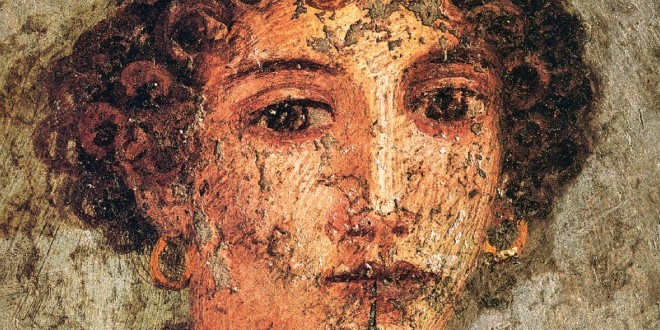Life Span: Born sometime between 630 BC and 612 BC, Eressos, Lesbos
Star Sign: Unknown
Famous As: Ancient Greek poet and legendary lesbian
Background: Her birthplace, the mediterranean island of Lesbos, has since given its name to homosexual women, as she herself has become synonymous with female love and sexuality. She was the daughter of Scamander and Cleïs, was married, it is thought, to a wealthy merchant, and has a daughter named Cleïs. Sappho also had three brothers. Her family was politically active, which caused Sappho to travel a great deal.
Work: She headed a group of female poets, to recite and compose lyric poetry – a practice that was commonplace in Ancient Greece. This group is also thought to have been a school of sorts, her students being the main subjects of her poems. Her work was made up of nine ‘books’, kept in the Library of Alexandria, most of which have now been lost. Fragments and incomplete poems were rediscovered through the ages as copies on Egyptian papyri. It is said that one of her poems was as long as 1320 lines. The largest of the surviving poems is just 20 lines long, and none of the works are complete.
Some of her love poems were addressed to women. Writing in Aeolian, an ancient Greek dialect, she gives the names of several women whom she loved; Atthis, Anactoria, Gongyla, and Mnasadica.
Political tension that occurred later in her lifetime forced Sappho to be exiled to Syracuse. Little of this part of her life seems to be known, except that she was able to return from this exile (possibly to Eressos) in 581 BC, and died of old age some time after. However, there were legends in ancient and medieval eras of her throwing herself over a cliff due to unrequited love for Phaon, a male sailor.
Greatest Achievements: When she went to the city of Syracuse, a statue was built to honor her. Despite her work being largely lost, her reputation in her time was immense, and continues to this day. One of her many styles of writing in Aeolian is now known as ‘Sapphic’, after her. She was reputedly considered by Plato to be the tenth Muse.
“Some say of nine Muses, how neglected!
Behold, Sappho, from Lesbos, is the tenth”
 Lesbian, Gay, Bisexual, Transgender & Intersex News Lesbian News, Gay News, Bisexual News, Transgender News, Intersex News, LGBTI News
Lesbian, Gay, Bisexual, Transgender & Intersex News Lesbian News, Gay News, Bisexual News, Transgender News, Intersex News, LGBTI News




